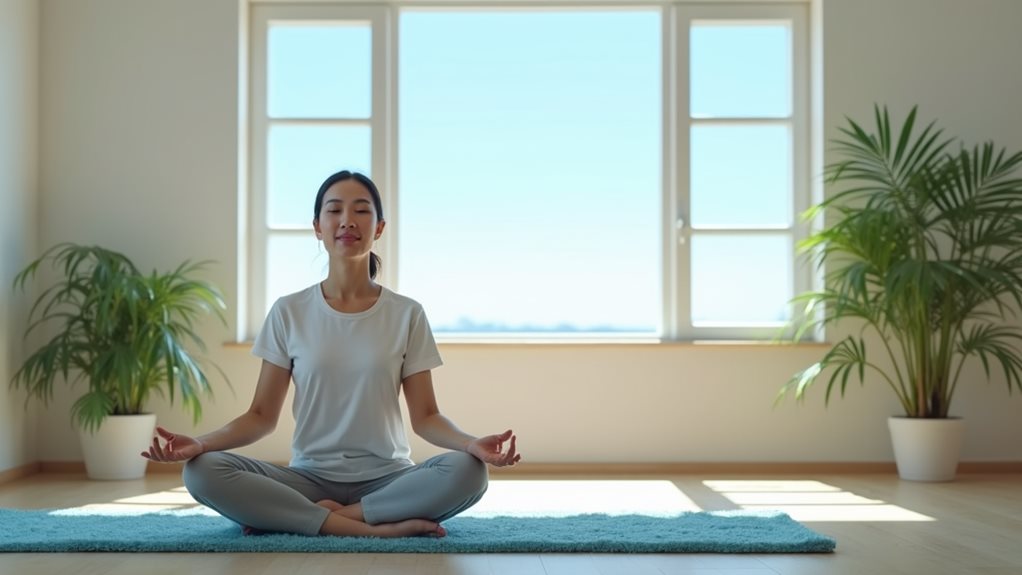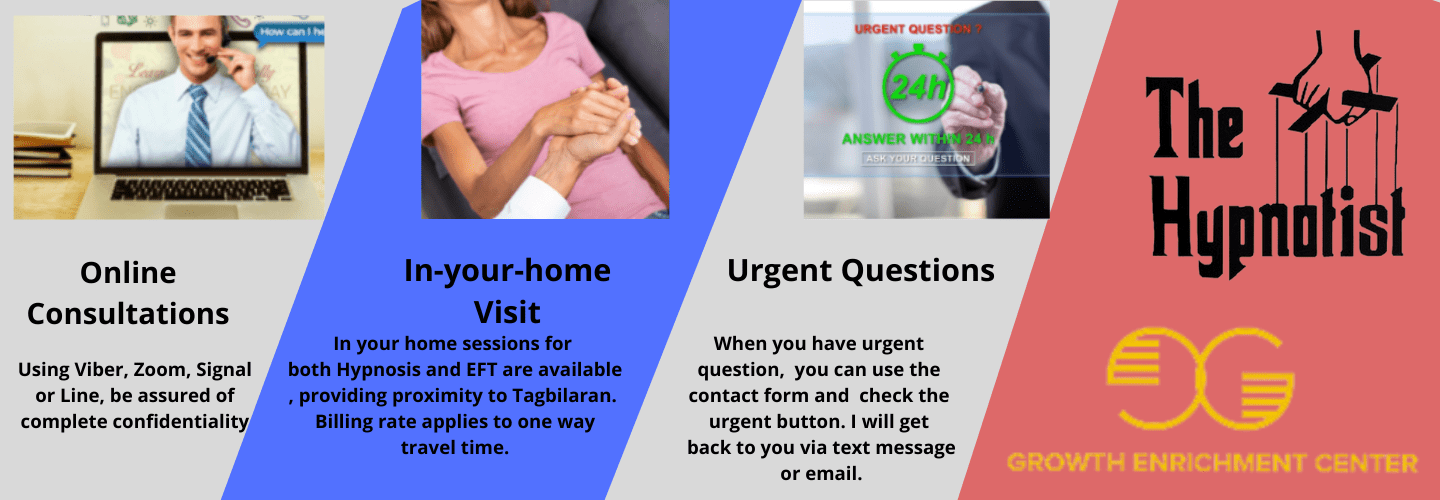
You can transform your mind and alleviate stress by mastering self-hypnosis, a powerful tool that taps into your subconscious. Start with mindful breathing to center your thoughts, and use visualization to create a peaceful mental space. This practice not only soothes your mind but also reshapes negative thought patterns and strengthens your mind-body connection, reducing overthinking. Adopting daily self-hypnosis routines enhances mental clarity. Explore further to discover how these techniques can markedly improve your well-being.
Key Takeaways
- Utilize self-hypnosis to reshape daily stress responses and enhance mental clarity.
- Employ visualization and mindful breathing to deepen the hypnotic state and promote relaxation.
- Modify negative cognitive patterns and beliefs through subconscious restructuring during self-hypnosis.
- Practice daily mindfulness to strengthen the mind-body connection and manage overthinking.
- Consistently use self-reflection exercises to prepare the mind for effective, receptive hypnosis sessions.
The Fundamentals of Self-Hypnosis for Stress Relief
Understanding the fundamentals of self-hypnosis can greatly enhance your ability to manage stress effectively.
By delving into self-hypnosis basics, you're tapping into a powerful tool that leverages your subconscious mind to foster relaxation and combat stress.
It's not just about quieting your mind; it's about reshaping how you respond to daily pressures.
Self-hypnosis aids in cognitive restructuring, helping you modify those negative thought patterns that fuel stress.
Through regular practice, you'll notice a significant improvement in your mental clarity and overall well-being, empowering you to handle life's challenges with a more balanced and focused approach.
Key Techniques to Deepen Your Hypnotic State
Building on the fundamentals of self-hypnosis for stress relief, let's explore key techniques that can deepen your hypnotic state and enhance your practice.
Trance induction begins with mindful breathing; focus on each inhale and exhale to anchor your awareness.
Once settled, employ visualization techniques, picturing a serene environment—maybe a quiet beach or a peaceful forest. This imagery not only calms the mind but also facilitates a deeper trance, making your subconscious more receptive to positive suggestions.
With consistent practice, you'll find that these methods not only deepen your hypnotic state but markedly boost your overall well-being and stress management.

While you explore self-hypnosis, it's vital to tackle the persistent challenge of negative thoughts through cognitive restructuring.
This approach helps you identify and modify the cognitive patterns that underpin these thoughts, enhancing your mental clarity. By questioning and adjusting these patterns, you're not just suppressing negativity; you're transforming it at its root.
It's about replacing irrational beliefs with balanced, realistic thoughts that support your well-being. As you practice, you'll notice a shift in your mental landscape—from cloudy and tumultuous to clearer and more serene.
This change is important for maintaining focus and achieving deeper states of relaxation in your self-hypnosis journey.
The Role of Mind-Body Connection in Alleviating Overthinking
As you explore the practice of self-hypnosis, it's essential to recognize how deeply your physical state influences your mental processes, particularly when it comes to overthinking.
Engaging in mindfulness practices can greatly enhance your emotional awareness, creating a stronger mind-body connection. This awareness allows you to observe your thoughts without judgment, interrupting the cycle of overthinking.
Daily Practices to Enhance the Benefits of Self-Hypnosis
To maximize the effectiveness of self-hypnosis, it's essential that you incorporate daily practices into your routine.
Start with mindfulness practices each morning to ground yourself in the present. This helps clear your mind, setting a positive tone for the day.
Dedicate time for self-reflection exercises in the evening, reviewing your thoughts and emotions. This process not only deepens your self-awareness but also prepares your subconscious for receptive hypnosis sessions.
Frequently Asked Questions
How Long Does It Take to See Results From Self-Hypnosis?
You might start noticing changes from self-hypnosis techniques within a few weeks. Personal experiences vary, but consistent practice deepens effects, enhancing your mental clarity and stress management skills more noticeably over time.
Can Self-Hypnosis Be Dangerous?
Like venturing into deep waters, self-hypnosis bears risks if not properly guided. You might face potential side effects, such as increased anxiety or false memories. Always practice cautiously and consider professional guidance.
Is Self-Hypnosis Effective for Everyone?
Self-hypnosis might not work for everyone due to individual differences and psychological factors. You'll find it most effective if tailored to your specific needs and if you're open to the process.
What Are Common Misconceptions About Self-Hypnosis?
You might think self-hypnosis is just fancy daydreaming, but it's more. Misunderstood techniques and hypnotherapy myths often paint it inaccurately—it's not mind control, just a tool for deeper self-awareness and stress relief.
How Often Should I Practice Self-Hypnosis for Stress Management?
You should practice self-hypnosis daily to manage stress effectively. Establishing a routine maximizes benefits, making ideal practice essential for sustaining mental clarity and emotional balance. Frequent sessions deepen your proficiency and enhance relaxation.
Conclusion
Imagine your mind as a serene lake. Each session of self-hypnosis is like a stone skipped across the water, creating ripples that gently expand, reaching deeper into the calm. Just as these ripples settle into tranquility, so too will your thoughts. By integrating these practices daily, you're not just soothing momentary stress; you're sculpting a resilient, peaceful mind. Embrace this journey, and watch as each ripple transforms your thoughts into a lasting sanctuary of clarity and peace.





